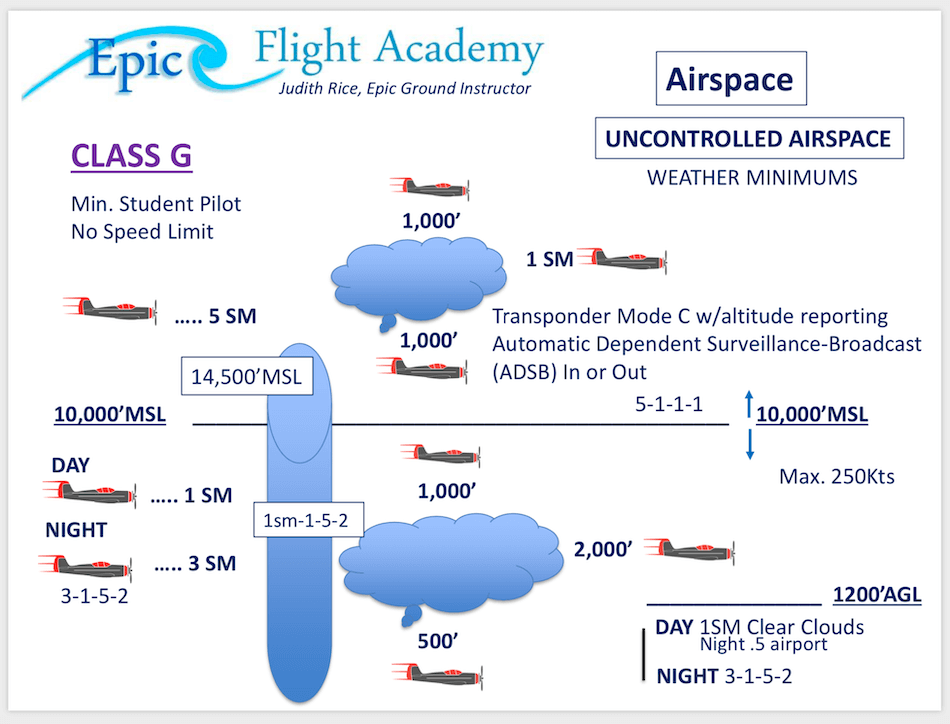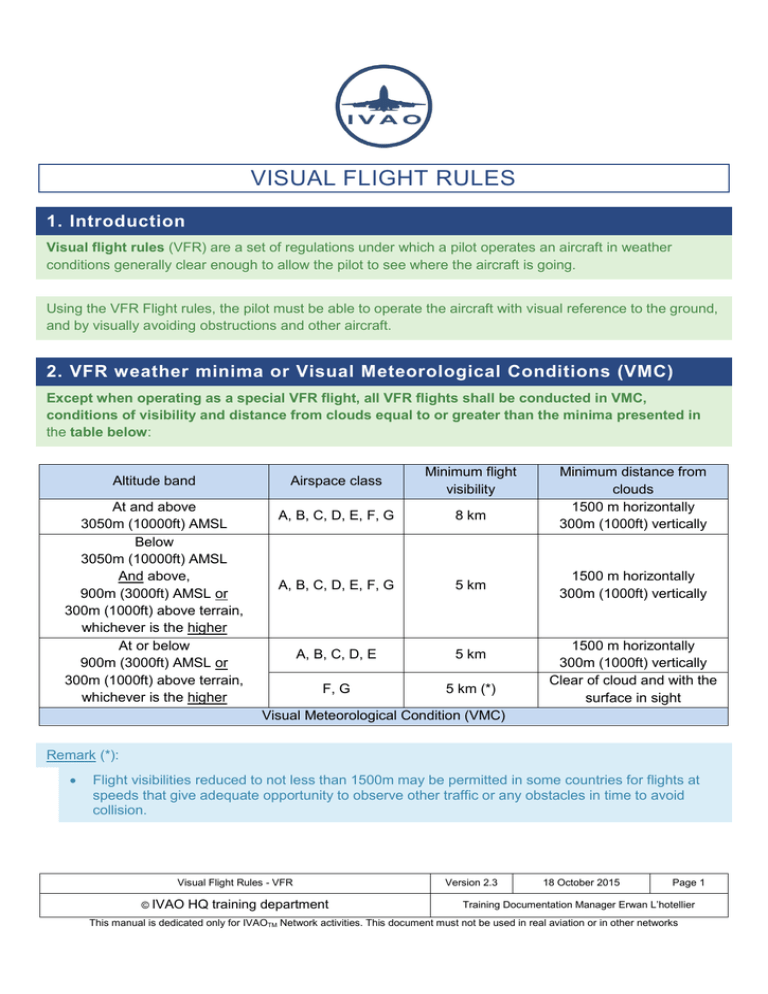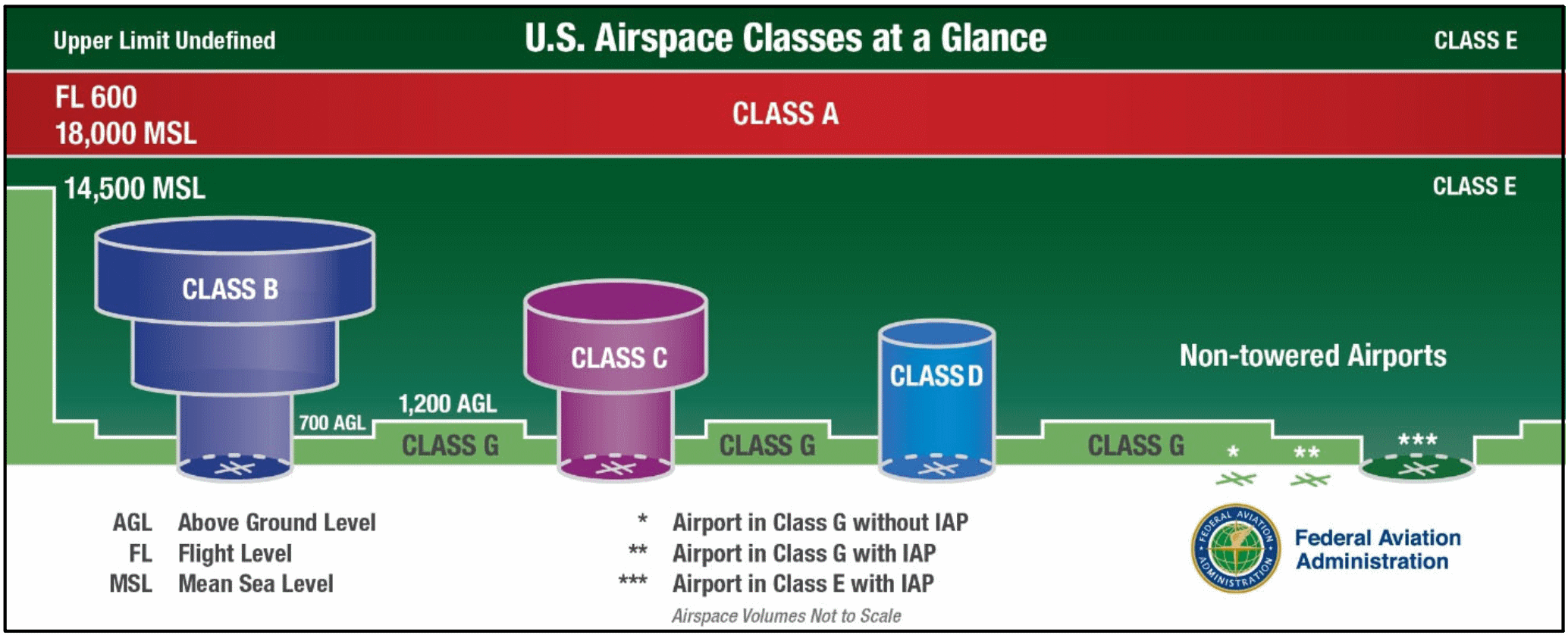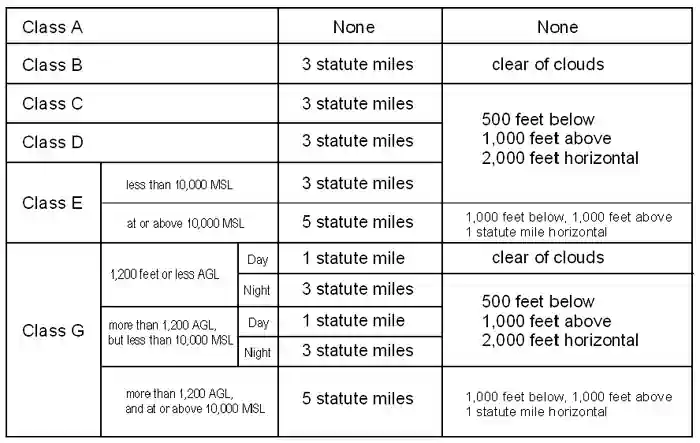class g airspace visibility requirements
In accordance with FAR 91155. Visibility and cloud clearance requirements are less as well like in class G airspace.

Faa Airspace For Vfr Flight Youtube
VFR Minimum Distance from Clouds Below 10000 MSL.
. 135-129A 79 FR 41126 July 15 2014 a Unless otherwise specified in the certificate holders operations specifications when conducting VFR helicopter air ambulance operations in Class G airspace the. On the other hand Class G airspace has four different sets of altitude-dependent minimums. Above 10000ft MSL the requirements are 5 SM visibility and cloud clearance of 1000ft above 1000ft below and 1 SM horizontally.
Only 1 statute mile is required instead of three. 500 Below 1000 Above 2000 Horizontal. In my opinion FAR 91155 weather requirements applicable to Class E airspace 700 and above but below Class B and applicable to Class G airspace below 700 apply.
135609 VFR ceiling and visibility requirements for Class G airspace. Class G Is The Most Lenient And Confusing. 36 rows Notwithstanding the provisions of paragraph a of this section the following.
Only IFR aircraft are permitted in class A airspace and air traffic control is responsible for ensuring their separation both vertically and horizontally. Day except as provided in 91155b 1 statute mile. Requirements for a flying in a Class D airspace are relatively minor and obtaining approval to enter is also very simple once you know what to do.
Below 10000 feet MSL however the weather minimums are more relaxed than the requirements of Class E airspace. Although Class G is uncontrolled it is also subject to the most weather restrictions based on where the airspace is located. 500 Below 1000 Above 2000 Horizontal 500 Below 1000 Above.
Class G During the Daytime During the daytime Class G weather minimums are still the same if at or above 10000 feet MSL five F-111s. Class G Airspace Weather Visibility Requirements. Class G airspace uncontrolled is that portion of airspace that has not been designated as Class A Class B Class C Class D or Class E airspace.
10 rows G night 3 statute miles 152 4500 below 41000 above 42000 horizontal G day 1 statute mile. Cloud clearances range from clear of clouds to 1SM There are 6 sets of Class G weather minimums associated with various altitudes during the day or night. From loss of control on the ground LOC-G a hard landing a gear-up landing or a prop strike there are ways to reduce your chances of needing costly aircraft repairs.
Above the Class G ground is Class E everywhere else and is controlled airspace. Day - 1 Statute Mile Night - 3 Statute Miles. Class G airspace is not depicted on any chart.
In the airspace highlighted below Class E starts at 1200 AGL so Class G automatically starts at the surface and extends to - but doesnt include - 1200 AGL. The VFR visibility and cloud clearance requirements are shown in FAR 91155. Related Article Class G Airspace Explained.
August 16 2018 by ETL. Day except as provided in 91155 b 1 statute mile. Above 1200ft stays at 1sm visibility but then for cloud clearance you must be 1000ft above 500ft below and 2000ft horizontal.
At night in Class G between 1200 AGL and 10000ft MSL the visibility and cloud clearance are the same as Class CD. 1200ft or less above the surface regardless of MSL altitude Day. Depending on how high you fly and the time of day within Class G airspace your visibility requirement could range anywhere from 1SM to 5SM.
500 Below 1000 Above 2000 Horizontal. To prepare for flying in Class D airspace simply learn what Class D airspace is where it is located what the operational requirements and restrictions are and how to get approval to enter. For aircraft other than helicopters.
Class G 1200 feet or less above the surface regardless of MSL altitude. A Unless otherwise specified in the certificate holders operations specifications when conducting VFR helicopter air ambulance operations in Class G airspace the weather minimums in the following table apply. 1200 or less above the surface regardless of MSL altitude Flight Visibility.
1200 feet or less above the surface regardless of MSL altitude 1 statute mile. Avoiding Common Aircraft Damage Causes. FAA-2010-0982 79 FR 9975 Feb.
Daytime requirements for Class G are 1 statute mile visibility and clear of clouds to 1200ft. At night less than 1200 AGL in Class G airspace the helicopter flight visibility requirements are 1 statue mile visibility and cloud clearance. 1200 feet or less above the surface regardless of MSL altitude For aircraft other than helicopters.
135609 VFR ceiling and visibility requirements for Class G airspace. This video series focuses on common mishaps consequences that can more than hurt your pride they can really hurt your wallet. Night except as provided in 91155b 3 statute miles.
Day ½ statute mile. VFR Minimum Visibility Below 10000 MSL. 1 statute mile visibility and clear of clouds.
During the day less than 1200 AGL in class G airspace the flight visibility requirements are ½ statue mile and the cloud clearance requirements are to remain clear of clouds. 14 rows These minimums cover most Class G airspace but are only valid during the daytime when you are. 500 feet below 1000 feet above 2000 feet horizontal.
Air Traffic Control Facility. Weather Requirements Class G minimum weather requirements exist so that you can see and avoid other aircraft and stay out of the clouds. Minimum flight visibility and distance from clouds required for VFR flight are contained in 14.
Class A A for high Altitude or class alpha airspace exists from 18000 feet MSL up to 60000 feet MSL. Night except as provided in 91155 b 3 statute miles. Rules governing VFR flight have been adopted to assist the pilot in meeting the responsibility to see and avoid other aircraft.

Visual Meteorological Conditions Wikiwand
How To Remember Vfr Weather Minimums Bobbie Lind

Airspace Classes Explained The Ultimate Guide For Beginners

Airspace Classes And Special Use Airspace Everything There Is To Know

Why Are There Mandatory Cloud Clearance Requirements Boldmethod

Helicopter Instrument Procedures Part Three
Regulations Vfr Minimums Learn To Fly Blog Asa Aviation Supplies Academics Inc

What Is The Minimum Flight Visibility And Proximity To Cloud Requirements For Vfr Flight At 6 500 Feet Ms Aviation Training Aviation Education Flight Training

February 2017 Praditya Ewangga Page 2
How To Remember Vfr Weather Minimums Bobbie Lind

This Is How Class G Airspace Works Boldmethod





